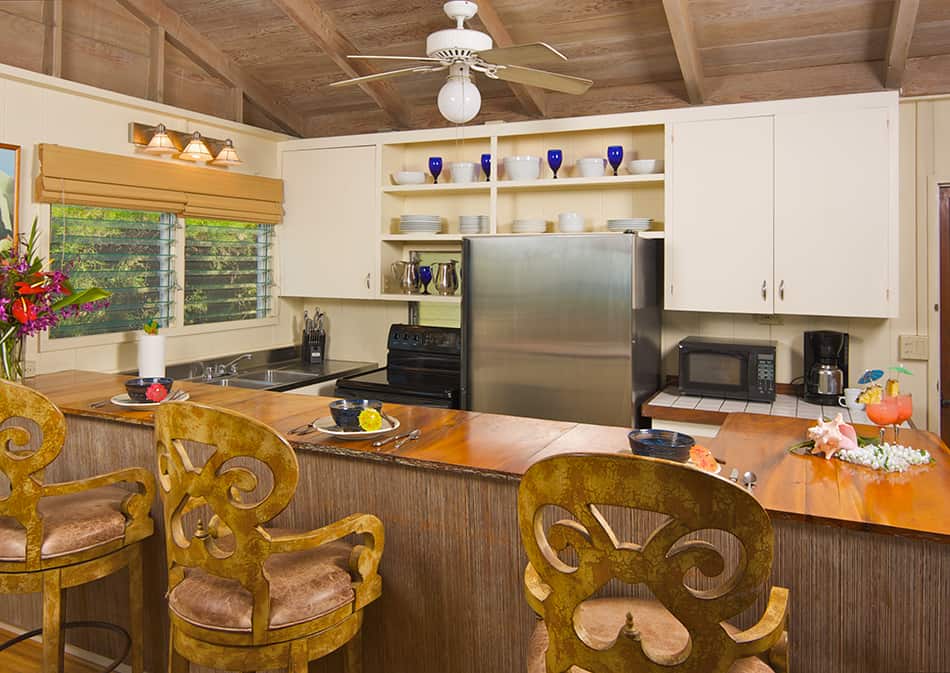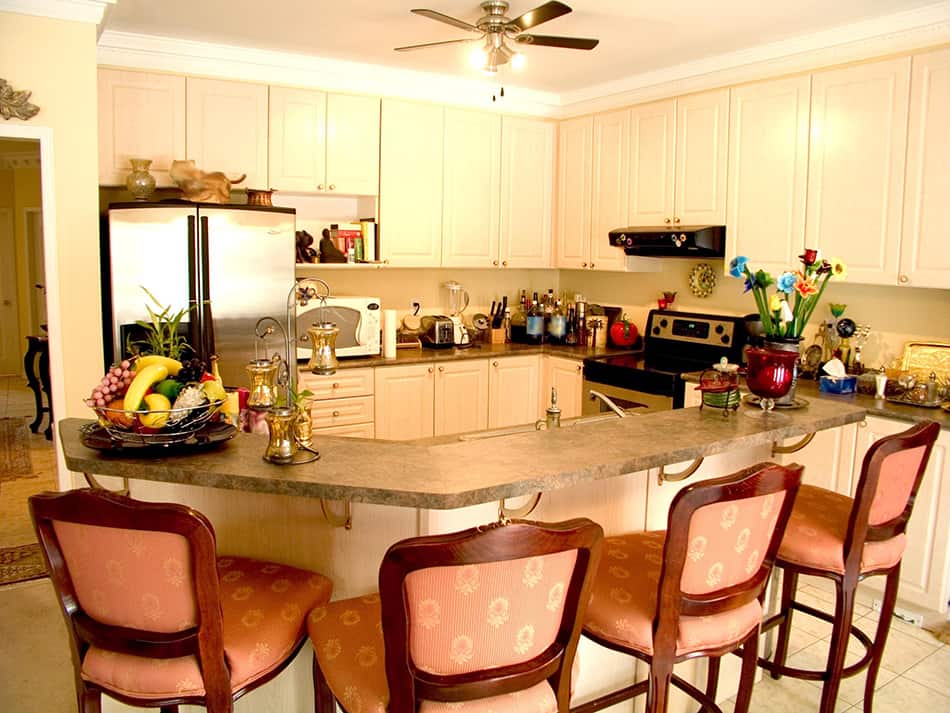If you don’t like the heat…install a ceiling fan in the kitchen. If only it were that easy, right? Deciding whether or not to install a ceiling fan in your kitchen can sometimes be a challenge.
You would have to worry about height limitations or how a fan fits in with the rest of your kitchen cabinetry. You’ll also have to consider your lighting fixtures and whether the ceiling fan can fit beside these.
If you are someone who loves to cook, then there’s probably always a lot going on in your kitchen; a lot of movement, lots of gadgets, and a lot of heat in the summer.
So it makes sense to think of installing a ceiling fan. But many people get discouraged about installing a ceiling fan in the kitchen, for reasons such as the fact that the kitchen already has too many gadgets and there might be no space for the ceiling fan.
Some people also wonder if they can install a ceiling fan just to remove cooking smells after cooking, mostly when they don’t think their kitchen vents are doing a good enough job. Long story short, kitchen ventilation is usually very tricky.
Here is our quick answer. Keep reading until the end to get all the details!
If your kitchen isn’t originally designed with proper airflow and adequate ventilation, you should consider having a ceiling fan. However, if your kitchen is properly ventilated, there is no need to have a ceiling fan in the room.
The Benefits of Kitchen Ceiling Fans
Installing a ceiling fan in your kitchen comes with a few benefits. From helping to cool the home to help circulate air and odors indoors, ceiling fans also offer a remarkable and cheaper solution that will help you keep your home’s energy costs down. The benefits of kitchen ceiling fans include:
- Cooling benefits: Ceiling fans keep your kitchen at a temperature that’s comfortable for everyone
- They circulate stagnant air around the kitchen
- They remove cooking smells from the kitchen area
- The constant rotating movement keeps flying insects such as flies, away
- Reduced energy costs: A ceiling fan is one of the cheapest ways to keep the kitchen cool. The air coming from the ceiling fan alone might not be enough to keep the kitchen on very hot days, but it’s definitely enough to keep you cool on the days when you just need a little air.
This means that you can avoid turning on the air conditioner until the hottest days of summer; this saves a whole lot of money. Even on hot days, you can use your ceiling fan alongside the air conditioner; this way, you don’t have to turn the air conditioner up, thereby saving a lot of money on energy.
Tips for Buying and Installing a Ceiling Fan in the Kitchen
Before buying a ceiling fan and picking out the spot to install it, you have to consider a couple of factors, such as:
- When choosing a spot for your ceiling fan, make sure to pick a spot where the fan’s blades will not be hitting any overhead cabinets or ceiling lights and light fittings. Also, check to make sure that the cabinet doors would not be hitting the fan blades when they’re opened.
- Browse through the various options for fans available. Some people, especially those with minimalist taste, prefer fans with retractable blades. Retractable blade ceiling fans are a much finer substitute to traditional ceiling fans, and they most definitely make up for the negative sides of air conditioning too.Retractable fans leave you feeling cooler on those hot summer days when you need a little more fresh air in the kitchen, and in the days when you don’t need them, you can keep them out of sight by retracting them.
Long story short, go to two or more showrooms and have a good look at the various options of fans available. Some people may also prefer fans with built-in light fixtures. Make sure to explore all these options before making a decision.
- Before purchasing a fan, look through the settings and functions available. Make sure you can adjust its speed when you need to. Also, find out if the fan has seasonal settings and whether it comes along with remote control.
- Check the fan’s airflow rating. This is the amount of air that the fan can move around. A fan with a high airflow rating will be very strong as opposed to one with a low rating. So chose one that can provide the kind of air you need in the kitchen.
- Check whether the fan uses an AC or DC motor. AC motors are very popular, but DC motors also have their advantages. For instance, DC motors take up less energy, and they also operate more quietly.
Disadvantages of Having a Ceiling Fan in the Kitchen
Having a ceiling fan in the kitchen comes along with a few cons that make you consider some alternatives to ceiling fans in the kitchen. Some of the downsides include.
1. Installation could be tricky
Before installing a fan to your ceiling, you need to make sure there’s electricity connected to your kitchen ceiling. You might have to do this by taking power from your attic or any crawlspace above your kitchen. You would typically need an electrician for this job. Also, ceiling heights could affect the way you install your fans.
Usually, ceiling fans have to stay 7 to 8 ft above our heads, so when you have a home with a very high ceiling, you might need to install a rod before installing the fan. You’ll need to take several measurements to determine an appropriate length for the rod.
2. Its Reach is Limited
Unlike air conditioners, ceiling fans do not have a very wide reach. They would keep you cool when you’re standing close to them, but once you move a little distance away from the spot where your fan is installed, you may not feel their effect anymore, especially in a hot room like the kitchen.
3. Noise Problems
When not properly installed, fans sometimes develop an annoying sound that’s hard to get rid of. You can avoid this by getting a professional to install your fan.
Also, sometimes even when properly installed, fans can develop strange sounds, making your kitchen a noisy place to be. You’ll need to do some troubleshooting and maintenance work to get rid of these kinds of annoying sounds.







